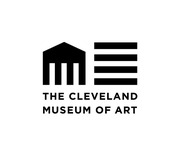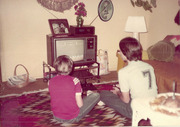tv American History TV CSPAN August 6, 2016 5:00pm-5:16pm EDT
5:00 pm
depot museum, one of many places we are visiting import your on. -- port huron. here to tell us about his ties to the city and is building. the 20th century would look so different without the photograph and a lightbulb, all common things that we take for granted, but they came from his brain. his brain came from port huron. he arrived here at seven years old, lord and 1847. in 1859,d working here and this was a brand-new built station. he got a job here at age 12. edison's mother yelling at his teacher mr. crawford for calling edison
5:01 pm
addled. you can see it hurt his feelings, it angered her, and she said to mr. crawford, he is a lot smarter than you are. and if you can't teach him, i will. so she homeschooled him. he credited his mother for making him the vanity became, through her kindness and teaching, and a love of learning. he read and read everything that he could. in the evenings as a man, he would read the encyclopaedia britannica. if edison were in school today, he might have been on ritalin or other medicine for add or adhd. he's had so much going on in his head that if you are particularly interested in the subject matter at hand, he did not want to pay attention.
5:02 pm
restraint -- a 1889,ed train from representing the one that thomas edison rode daily to detroit. he worked as a news paddler and would walk up and down the aisles of the train cars, selling fruit, candy, probably cigars, newspapers. he would arrive at the depot at 7:00 a.m. in the morning and arrived at detroit, coming back at 8:00-9:00 at night. he would spend his time selling things to passengers. we have a regression of his chemical laboratory and printing equipment. person we knowt of to printed newspaper on a moving train. he had access to the latest news through the telegraph pages at the train offices.
5:03 pm
he would get it hot off the presses, so to speak. he sold the detroit free press. during the civil war he was doing this. it was after the battle of shiloh, he was convinced the detroit free press to be given 1000 copies of the paper on credit. he sold way more copies than he usually did in the first station . ever the entrepreneur, he started raising the price. the closer he got back to port huron in the fewer papers he had left, the price went up. it went from sign since a copy to five cents a copy. copy to 25 cents a cents a copy.
5:04 pm
his mother objected to the method potential hazards that go along with mixing chemicals, so they moved this ring to the basement. chemicalscrounge and put them in these bottles. he labeled every bottle poison to keep people out. but what we don't show is that he labeled each bottle with a book sond kept a log that he knew what was in each bottle and could safely explore these chemicals. he had a chemistry book and was testing every statement made in the book to see if what the book said what really happened. she had to see for himself if what the book said was true. in the articles found archaeology of his boyhood home. the home burned in 1870 five years after his parents were evicted.
5:05 pm
left until it was excavated in the 1980's. there is no way to know if any of these came from edison, but we have printers type that matches the typeface used on his newspaper printed first on the train, until he was kicked off after some chemical laboratories caught the train car on fire. he moved the printing press and laboratory to the basement again. his father asked the railroad, if he stops this nonsense, can he have his job back? this is edison and agee was working. an adorable picture. but of a mischievous kid, very likable. people that's how he let
5:06 pm
have a chemical laboratory on his train. he talked to the engineer and the firemen into letting him do it. they knew what it took. apparently they had the confidence he could do it. well, they were wrong in their assessment of his abilities. while they were taking a nap, he's running to train. they were all rudely awakened with a stalling hot flash of dirty oily water because he did not really know what he was doing. that was the end of him running a train and becoming an engineer. thank goodness for that because he went on to such great things. this is a telegraph office. trains had telegraph operators becomes trains were dispatched by telegraph. each station had an operator, but there was also news. edison had an interest in anything electrical, especially telegraph.
5:07 pm
that was relatively new for him as a boy. he was four years old when it was inventive. he made his own set. but he was not proficient as a center. it wasn't known clements -- it was in mount clemens, michigan where he saw these three-year-old sons of the stationmaster playing on the tracks. and a box car was rolling towards him. to reset the break or something. he ran and saved the kid just in time for being killed. ingratitude, mr. mackenzie taug ht him morse code properly. he was a good student. in three months, he had become proficient enough to get his first job at the telegraph operator in downtown port huron
5:08 pm
atwater's jewelry store. a jewelry store is a bit of a stretch, they sold everything. he left after six months, he was not a good employee. tinkered with equipment and broke with tools. but mr. walker always had nice things to say about him. he went to stratford junction ontario and got a job from a telegraph agent. midwest,all over the never staying anywhere very long. he was always getting into trouble on the job for tinkering with the equipment. at one point he let a bottle of acid fall on the floor and it ate right through the floorboard into the bosses' desk below. for a few years he had three different jobs in three different cities.
5:09 pm
it did not last long as an employee, and it was important for him to be the boss. i think that's one of the lessons he learned that it has to be his way or it will work out for him. it will not work out for him. >> mary had a little lamb, whose fleece was white as snow. we have a model of the first phonograph invented in 1877. this was quite a popular project for people learning machine work. the edison laboratory had blueprints made so people could make a copy of this if they wanted. it was recorded on tinfoil.
5:10 pm
you would rapid around a cylinder. cylinder. around a one of these would in boss the tinfoil, and the sound waves of your diaphragm would emboss the tinfoil, and you would playback on the other one. this is a 50,000 watt lightbulb supposed to be part of a perpetual memorial to edison. it was lit in 1940 by edison's window along with mickey rooney and the mayor for the world premiere of the movie "young, edison." we have a newsreel from the time mickey rooney arriving on
5:11 pm
the steeple and an old train. at the end of it, mrs. edison throws the switch that likes this lightbulb up. you need welding goggles to look at it. it's so bright, even on the camera. edison is most famous for the lightbulb. he saidrite invention was the phonograph. soungure out a way to save d. i can play this for you if you would like. 1915, theder is from photograph from 1905. this is from memorial day. ♪ one million soldiers to the war have gone ♪ one million mothers -- for
5:12 pm
the ones who died in game ♪ mr. dazer: he invented the cylinder format. some might not realize that records were shaped like this originally. .his one is celluloid it's called indestructible because the early wax ones were early fragile. this one i could drop and it would suffer no ill effects. woulds would drop -- wax drop into one million pieces. the heyday of this piece was 1895 - 1915 or so. although in the 1920's, they would make cylinder machines with inside horns. he produced cylinders until 1929. he was loyal to his customers, providing them with cylinders. quotes,is most famous
5:13 pm
1% inspiration and 99% perspiration. you everything with hard work and was not afraid to do it. you show that as a young boy in the laboratory in his home, testing every statement made in a book about chemistry to see for himself if it was true or not. it just became important to him to have that work ethic. that she was working on the lightbulb, 1000 different compositions for the filament until he finally found the right one. again, hard work and sticking to it. that served him well in life. huron's pretty proud of thomas edison. he is probably one of most famous people in the world. he spent his formative years here. we have this beautiful train depot that he worked out of.
5:14 pm
his family is still here in the cemetery. it just shows to us that people from a small town can go on to do great things. invented the century. >> this weekend we feature port huron, michigan. huron and other stops on c-span.org/citiestour. american history tv, or we, every weekend on c-span3. overwrote it to the white house coverage takes you to the green party political convention in houston. on sunday, and on a copy them see the acceptance -- at 9:00 p.m., see the acceptance speeches for the nominee for president. listen on your mobile device using the c-span radio app. for watch anytime at c-span.org.
5:15 pm
>> american history tv. for professor gabriel chin discusses whether the initial intent of the 1965 immigration act was to diversify america or was an intended consequence. argues despite much racial tension, lawmakers at the time and much more diverse america was inevitable. the lecture part of a two-day symposium hosted by the u.s. capital historical society on the history of immigration. this is about 40. is gabriel speaker chin, who is a professor of law at the university of california, davis. jack specializes in both criminal law, and as this conference on phones, we
72 Views
IN COLLECTIONS
CSPAN3 Television Archive
Television Archive  Television Archive News Search Service
Television Archive News Search Service 
Uploaded by TV Archive on

 Live Music Archive
Live Music Archive Librivox Free Audio
Librivox Free Audio Metropolitan Museum
Metropolitan Museum Cleveland Museum of Art
Cleveland Museum of Art Internet Arcade
Internet Arcade Console Living Room
Console Living Room Open Library
Open Library American Libraries
American Libraries TV News
TV News Understanding 9/11
Understanding 9/11














